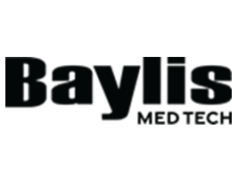
The CX 2023 Venous & Lymphatic programme is set to be a “highlight” of this year’s meeting, CX co-chair and executive board member Erin Murphy (Sanger Heart and Vascular Institute, Atrium Health, Charlotte, USA) tells Vascular News.
This year’s programme will highlight progress in the space, new data, and areas in which there is a need to “drive movement,” Murphy details, adding that the importance of comprehensive care will be a key underlying theme. “As venous interventionalists, we need to focus on treating all aspects of veno-lymphatic disease,” she remarks.
On Wednesday morning, presentations, edited cases and discussion will hone in on the management of superficial venous disease. Traditionally, Murphy explains, superficial disease was treated with surgical stripping and phlebectomy. She notes that nowadays, however, treatment is becoming increasingly advanced in this space, with options such as thermal closures, medical adhesive closures, and foam now the standard of care.
Commenting on the use of foam as a closure tool, Murphy believes this is an area in which there is not yet true consensus. While the technique is used widely in the USA for ulcer-bed sclerotherapy, Murphy states that there may be a higher risk of deep vein thrombosis (DVT) when it is used as a primary closure tool. There is still room for this treatment modality to be “optimised,” she believes.
At CX 2023, discussion will focus on which of these treatment options for superficial venous disease—thermal closures, medical adhesive closures, and foam options—might be better suited to certain patient groups and certain clinical scenarios.
In a Podium First presentation, Manj Gohel (Cambridge University Hospitals NHS Healthcare Trust, Cambridge, UK) will deliver a SPECTRUM study programme update on medical adhesive closure versus surgical stripping. Murphy predicts that the trial will show positive results for medical adhesive closure—data that would “support the direction in which the field is going”. However, she says, “We will have to wait and see.”
Deep venous consensus will be the focus of Wednesday afternoon’s session, with incompetence of the deep venous system within the lower extremities and the pelvis set to feature. “We traditionally did open surgery for these patients,” Murphy recalls, noting however that open reconstructions are “very complex surgically” and are associated with a relatively high rate of eventual failure and thrombosis. She notes that there are new technologies available in this space that are “really encouraging”. CX 2023 will look at how these technologies might impact the future of treatment in the space.
Venous stenting will be another topic on the deep venous agenda, with presentations highlighting how to avoid migration and defining patients who should not undergo stenting, among other topics. In this part of the programme, Murphy is set to provide insight into the US venous stent investigational device exemption (IDE) trials, outlining both trends and disparities.
According to Murphy, the venous field is progressing “very rapidly” on a yearly basis. “I think the CX programme has worked very hard to make a comprehensive and up-to-date program highlighting what we know now and where we are going as a field.”
The programme is becoming more international every year, Murphy comments, with interest expanding due to recognition that it is “truly a value-add to the venous space”. She adds “I think [the CX 2023 Venous & Lymphatic programme] is a great update for anybody who is in the venous space and who is interested in what progress we are making.”













